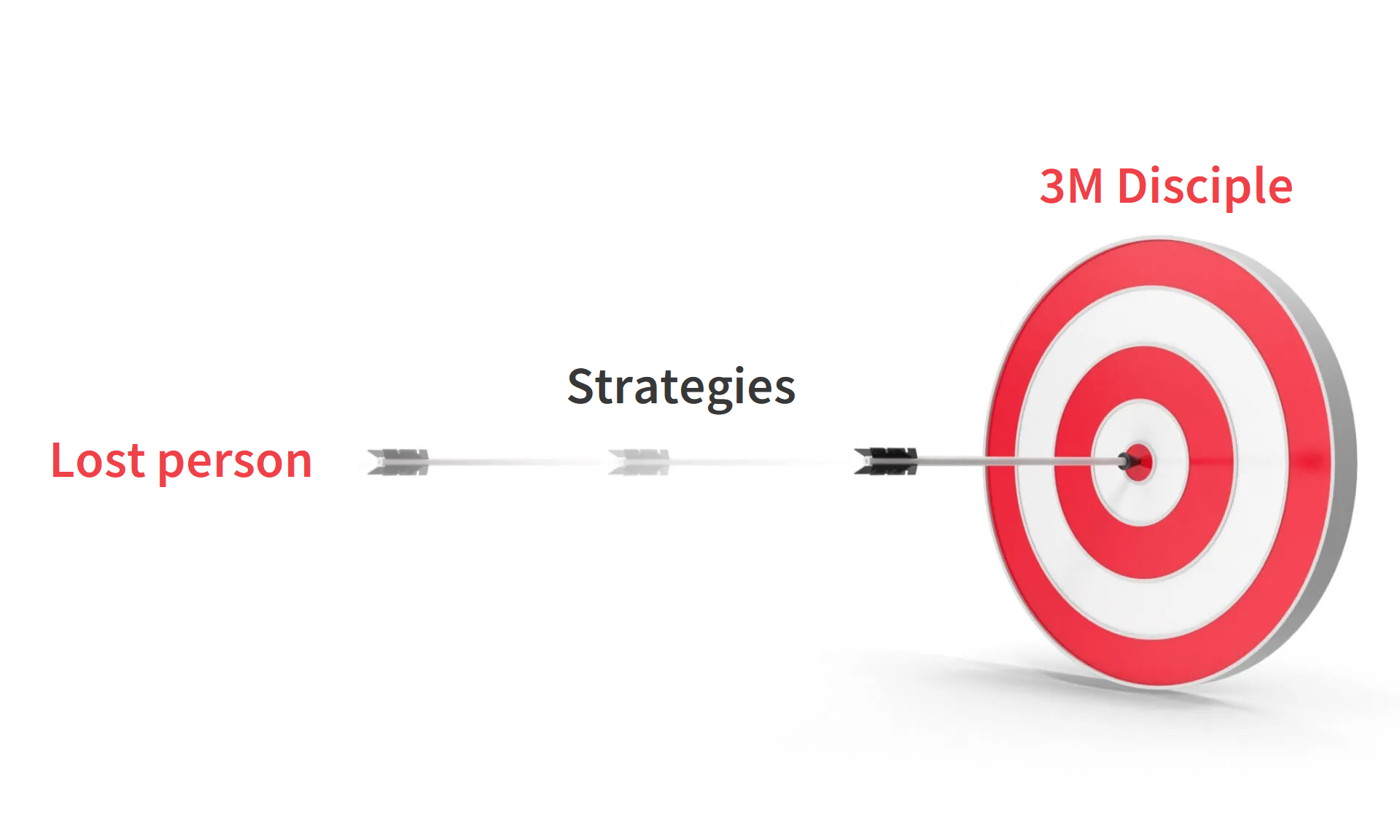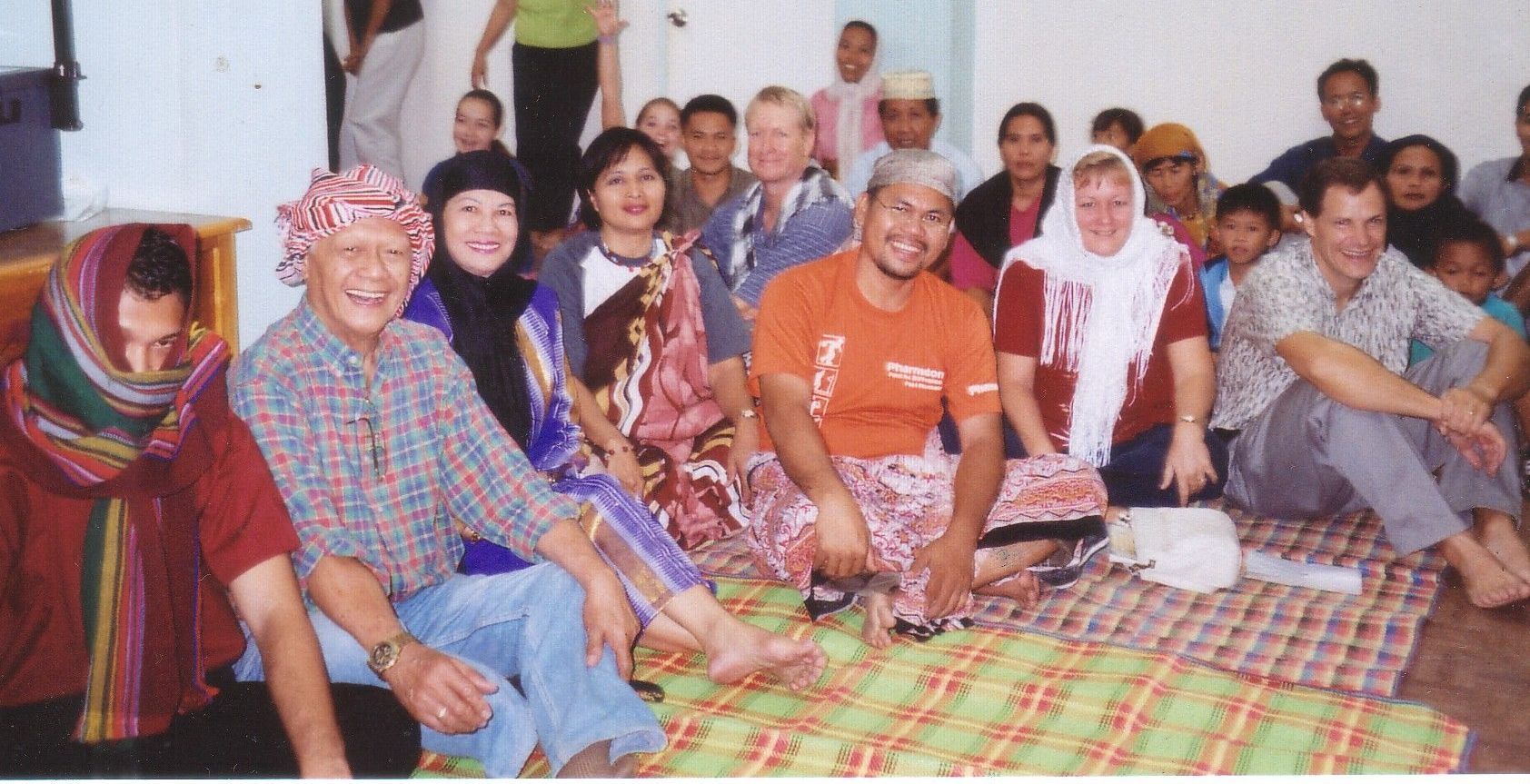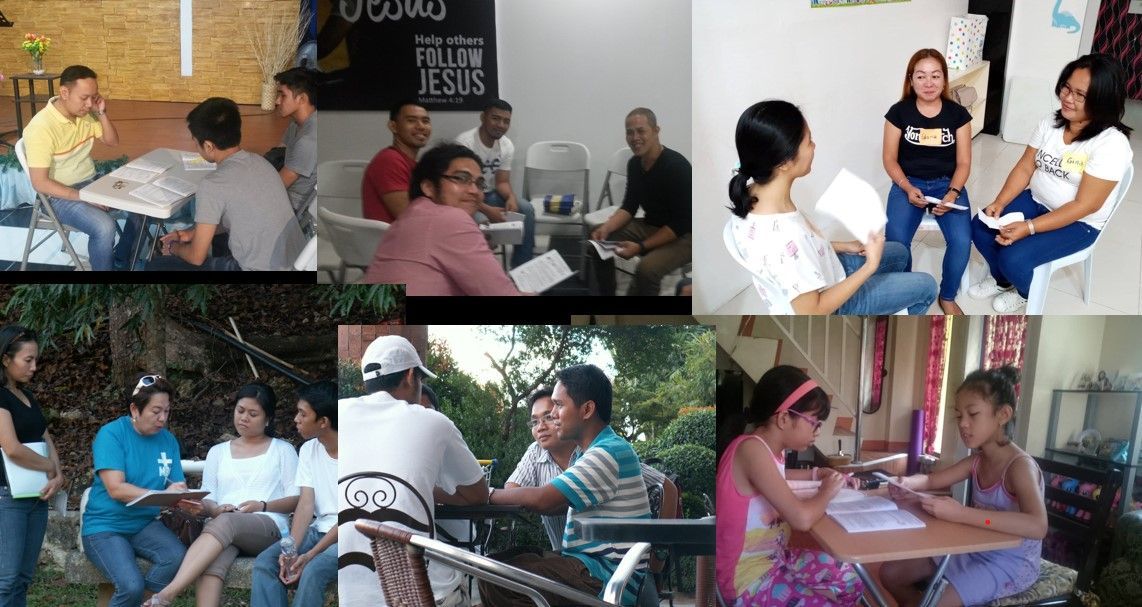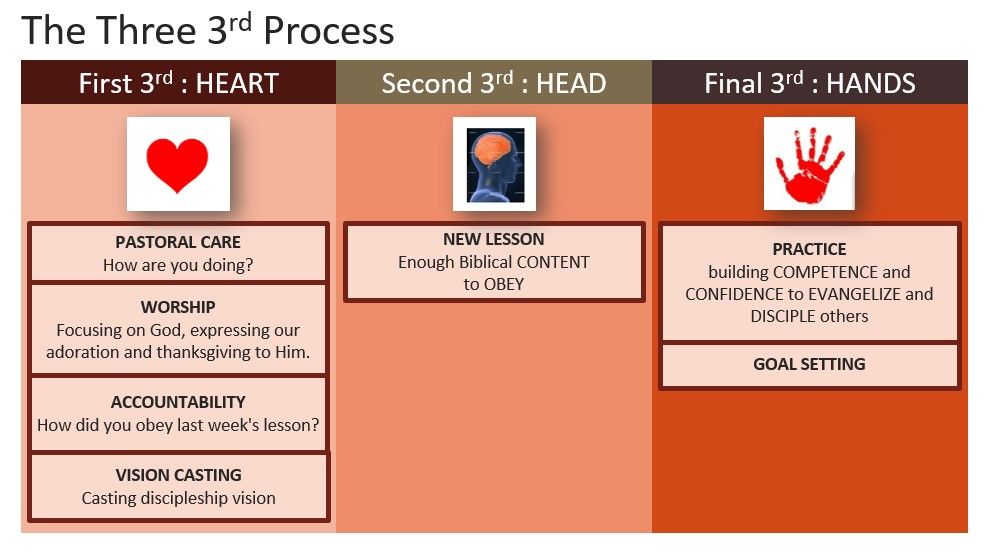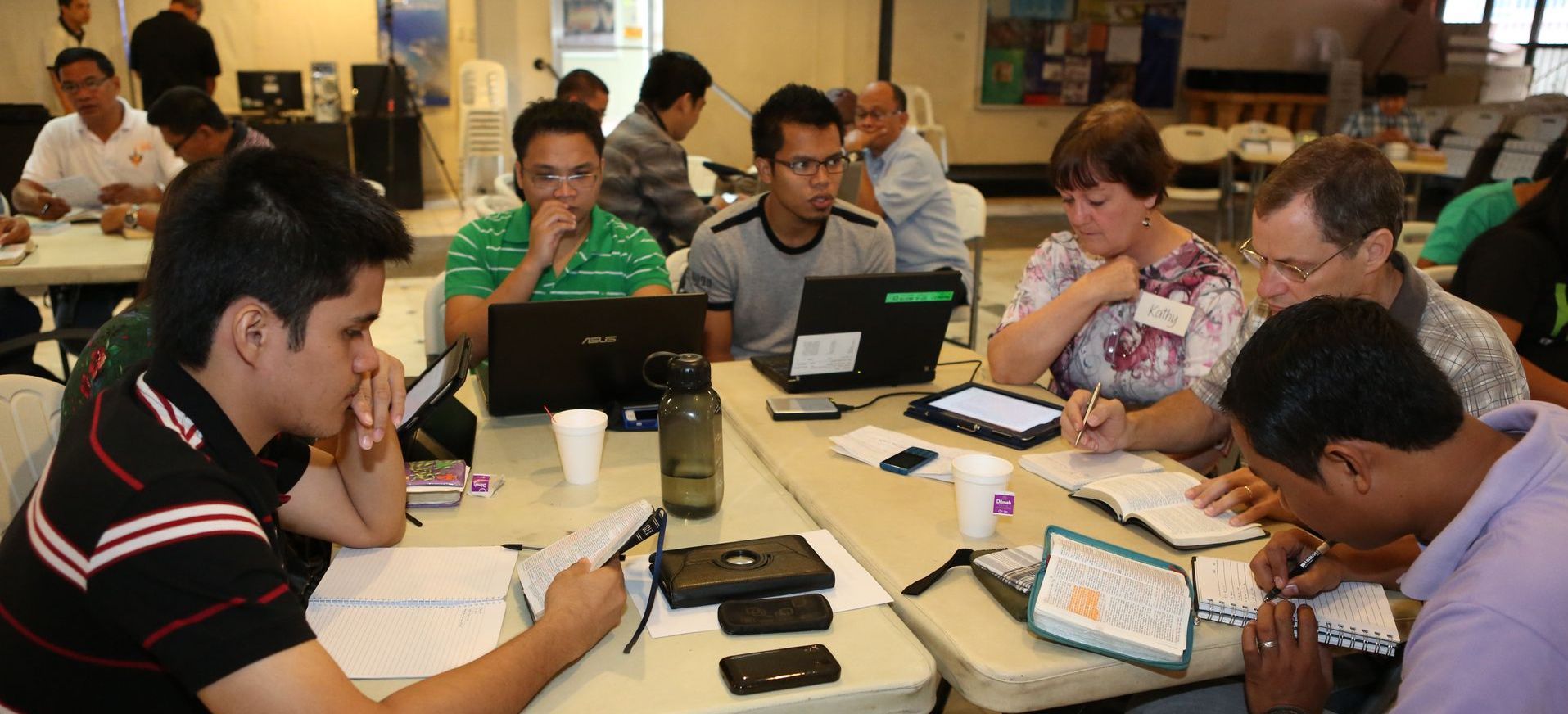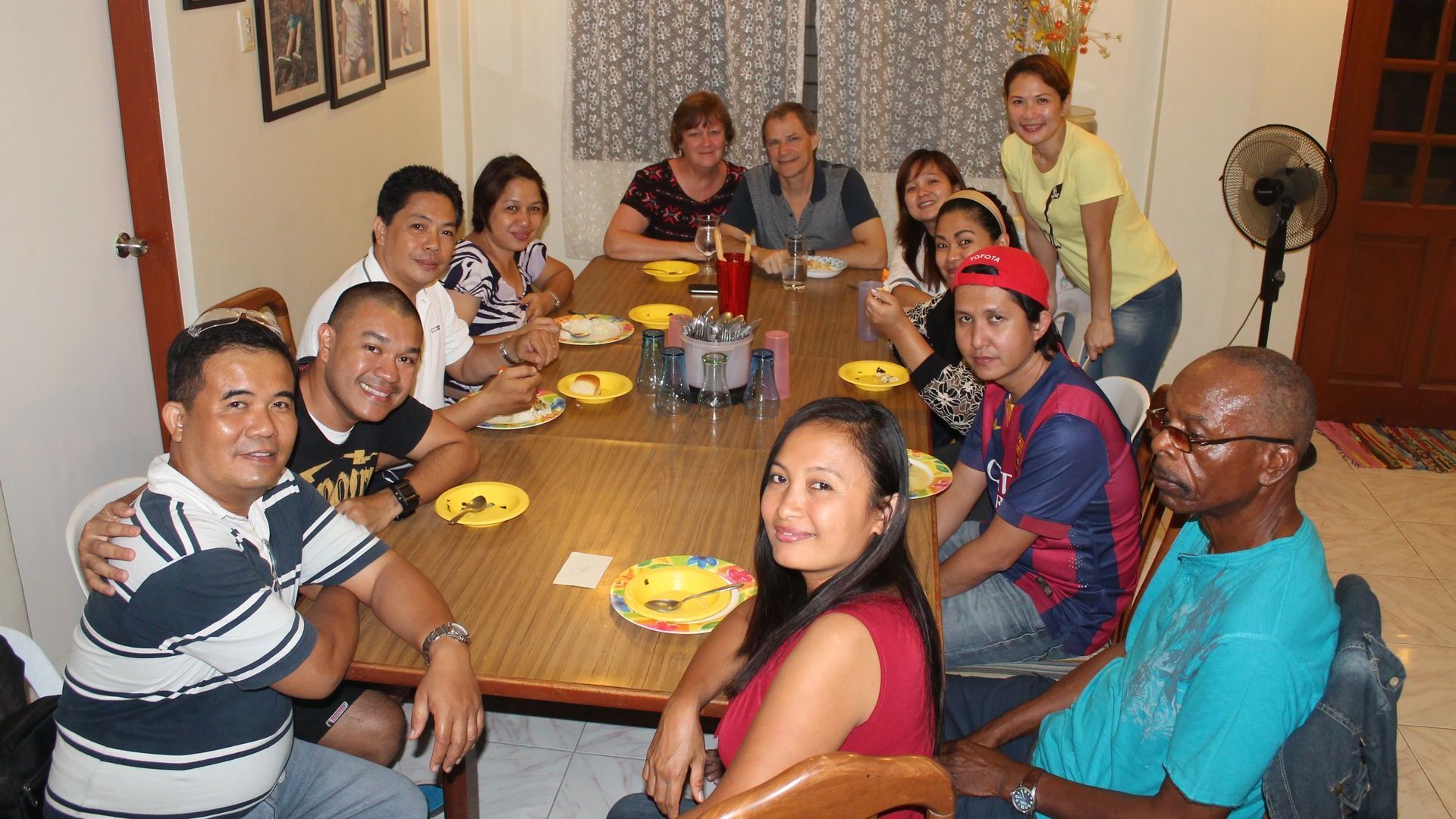The primary command of Jesus for His church was, “make disciples.” When Jesus told His disciples to go and make other disciples, He had some specific things in mind of what a disciple is. When we make things like furniture, vehicles, tools, factories, and so on, we carefully determine what it is we want to make before we start creating it. When Jesus was developing His disciples, it was clear that He already had in mind the kind of disciple he was developing. He said things like, “I will make you fishers of men,” “keep my commands,” “receive me,” “believe in me,” “love one another,” “love my Father,” and “love me…” His three years of ministry are a picture of Him building these characteristics intentionally into His disciples so that they would be ready to carry on the work by the power of the Holy Spirit when He left.
So what kind of a disciple are you trying to make in your church planting work? What are you aiming at and how will you get there? What kind of followers of Christ would you like to see your church producing? After all, the main task of the church you plant is to make disciples, whatever a disciple is.
It’s important to begin with a clear picture of the end product or disciple. Once that is clear, we can go ahead and develop a strategy to move people from "lost and disconnected" through "Connecting," "Gospel sharing," "Early discipleship," "equipping" and so on. In this post, I would like to share with you our description of the kind of disciple we aim for in our ministry, a
3M Follower of Jesus .
1M Disciples – “Maturing”
When I began my work as a church planter, my goal was to bring people to Christ and see them grow into
Mature followers of Christ. That was my picture of a disciple – someone maturing in their relationship, love, faith and obedience to Christ. So I shared the Gospel with them so they would know Christ, I took them through early discipleship lessons, I preached my heart out so they would know, love and obey Christ. It was beautiful to see them growing and changing and learning to love the Lord.
The problem was that I was burning out as I tried to be everything for them in the new church family. God showed me that He had given each member gifts and abilities and that the role of “apostles, prophets, evangelists, pastors and teachers” (which includes missionaries) was to “equip the saints (all the believers) to do the work of ministry” (Ephesians 4:12). So, I gave special effort to developing 2M Followers of Christ.
2M Disciples – “Maturing and Ministering”
I realized that for the church to continue without me in the future, all the work and ministry of the church needed to be done by the local people, so I set about training and equipping the people to serve and to lead and to take ownership of all the various needs of the church, encouraging and enabling them to minister to one another with their gifts and abilities. It was wonderful to see the body starting to function well on its own.
However, I often saw the church running well but I got frustrated personally because I wanted to be out winning new people and discipling new believers. But I had a growing church to care for and oversee, and we were seeing less souls saved than before, which was my passion.
It was at this time that I read books and began learning about the Disciple Making Movements (DMM’s) and Church Planting Movements (CPM’s) that were spreading to thousands upon thousands around the world through ordinary Christians. Some examples include:
*Miraculous Movements by Trousdale, Jerry (amazon.com)
*"Contagious Disciple-Making" by David Watson
*T4T: A Discipleship Re-Revolution: The Story... by Steve Smith (amazon.com)
These models didn’t exactly fit my context in urban, Catholic Philippines. But I knew that some of the principles driving them were universal and I needed to apply them in my ministry.
One of the keys to these movements was that they were
driven by the commitment to multiply disciple-makers and church planters from among the people they were reaching. The believers were equipped with simple reproducible methods right from the start. I knew that the key to movement beyond what I could do was to multiply laborers, giving my time to not just making disciples but to making disciples who would make disciples who would make disciples. If I could do that so that all the members were equipped and activated, then the work of winning the lost would not need to slow down so that I could develop the church.
3M Disciples: “Maturing, Ministering and Multiplying”
As I looked at Jesus teaching, I knew that this was His purpose for disciple making as he prepared them to lead a disciple making movement that would reach the whole world, passing it on from person to person and generation to generation and people group to people group. The disciples I worked at developing were to be 3M followers of Jesus.
This was the vision of the end product of the churches we planted. As Jesus came to the close of His earthly ministry, Jesus spent a lot of time talking about these three areas:
Maturing (upward with God) = Abiding in Christ, loving the Father and the Son, obeying Him …
Ministering (Inward with the church body) = That they may be one, wash one another’s feet, …
Multiplying (Outward to the lost around us) = Bear much fruit, sent into the world, make disciples, be witnesses …
This goes right along with the definition we are using in TEAM for a disciple: “A disciple is a
1.
learner, lover and follower of Christ who
2.
loves and serves the church and
3. makes disciples.”
This could look like this:
- Maturing (“learner, lover and follower of Christ”)
a. Abiding, listening, learning, obeying, trusting, praying, depending, confessing, in the Word, Quiet times, worship, etc. - Ministering (“who loves and serves the church”)
a. Belonging
b. Serving one another and the church
c. Acts 2 church
d. The “one another” commands
e. Spiritual gifts developed and used
f. Ministry Leadership Development - Multiplying (“and makes disciples” – being missional)
a. Living and witnessing for Christ out there
b. Connecting with the lost
i. Relational avenues
ii. Service avenues
iii. Direct Outreach
c. Starting Spiritual conversations
d. Witnessing
e. Doing personal discipleship with new believers
f. Multiplying – learning how to make new disciples who will also make new disciples who will make new disciples. Disciples seek to become like their Lord which includes sharing the Lord’s heart for the yet unsaved.
This 3M description guides us into a well-rounded disciple-making strategy. As we understand the various aspects of being a well-rounded disciple, we can find or develop processes and materials and experiences that lead our disciples to grow in each of the three areas.
Activity:
At the top of a page of paper (or white board) write the words “Lost Person.”
At the bottom write the three words: “Maturing” “Ministering” “Multiplying.”
From there you and your team can begin praying and working on a plan that will lead to this kind of a disciple. Create a diagram that shows the various elements that you will choose to use to help develop your people in these three areas.
Remember to begin with the lost. How will you connect with them? How will you lead them to Christ? Can you do it in a way that will be easily reproducible by the first believers that you lead to Christ so you can begin multiplying disciple makers early on? How will you help them grow to maturity? What will be in place to ensure spiritual growth for new believers and for long term growth together? How will you build community so that they are all ministering with their gifts and their love? How will you build multiplication into all that you do?
- Begin to build your description of a disciple in each of these characteristics:
a. Maturing
b. Ministering
c. Multiplying - Start to draw out the process of development. We will look at this and develop it more in future articles.
Response: In the comments below please share your observations and questions.

